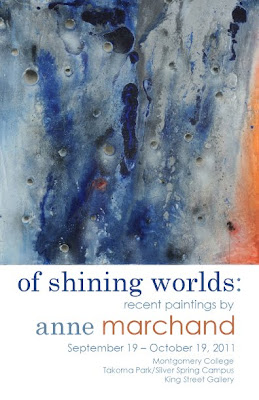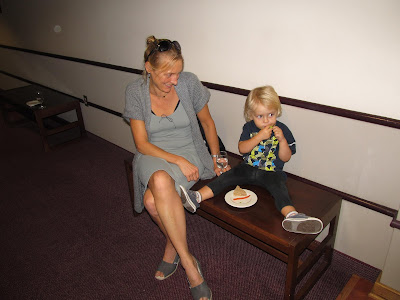until every shape has found its city
Reston, VA: GRACE (Greater Reston Arts Center) is pleased to present until every shape has found its city with Evan Reed from September 29 through November 12, 2011. The exhibition explores the intersection of art, literature, and architecture through complex sculptures and drawings that transcend literal interpretations.Using commonplace materials – lumber, plaster, wall board, and nails – Evan Reed creates fantastical sculptures that reference reality but travel beyond into the realm of imagination. His “impossible buildings” with skewed framing, walled-off rooms, and disappearing passages invite the viewer to slip through reality and enter an alternative space where architectural forms become departure points for dreams.
Reed’s diverse influences range from poetry and literature to sacred geometry and visionary architecture. His title, until every shape has found its city, is borrowed from Italo Calvino’s Invisible Cities, a novel featuring imaginary conversations between Marco Polo and The Kublai Khan. In the book, the explorer describes his travels to the emperor through a series of evocative stories. In a similar manner, Reed invites his audience to discover his works through multiple viewpoints. By building sculpture as Calvino organized his novel through complex interlocking sections, Reed draws the viewer deeper into the mystical meanings of his work.
until every shape has found its city (all in lower case) features six large-scale sculptures and twelve drawings which incorporate diverse, multi-cultural sources. Visitors entering the gallery are met by the soaring, thirteen foot “Burj al-Shawq” (Tower of Desire) growing and evolving from its solid, spiral base into a tower of cluttered construction cranes. Drawing on a trip to Dubai during its building boom, Reed explores the conflicts between the old and the new Middle East in architecture, culture, and political upheaval.
Towards the rear of the gallery “October Hive” hangs in space just as its name implies – like a beehive suspended from a tree. In an unplanned coincidence, the sculpture’s eight interconnected chambers precisely mirror the hexagonal architecture of the GRACE gallery space. Although “October Hive’s” eight peaks resemble dormers on a traditional Cape Cod home, Reed is also referencing the round Hakka houses in
Fujian, China and eighteenth century Panopticon architecture designed so that prison guards could secretly observe inmates from a central tower.
Filling the gallery’s main front window “A Corner for Gaston and Gonzalo” extends over a built-in bench and five feet into the gallery. The sculpture’s simple, overall form is based on Reston’s nineteenth century Bowman distillery building while its center niche (the corner referred to in the title) references Reston’s more recent architecture – in particular the built-in planting boxes on Heron House balconies and the decorative sculpture and niches designed by Gonzalo Fonseca in Lake Anne. Reed made several exploratory trips around Reston gathering ideas for this site-specific work including visits to the Reston Museum and a meeting with Reston’s founder, Robert E. Simon, who discussed his intentions for the community.
The niche in “A Corner for Gaston and Gonzalo” also holds a surprise – an etched glass panel which reveals a street scene projected by a hidden camera obscura. Here Reed has brought the outside cityscape into his sculpture and given form to his title while alluding to the community’s history and hopes.
“Using architectural forms has given me a way to create a dialogue between many distinct impulses. The viewer can move through time and location. Memories of familiar forms yield to frameworks that describe a potential future or reveal a desertion of plans.” Reed’s beautifully crafted, intricate sculptures and drawings offer a rare opportunity for dialogue about our complex relationship to structures
A twenty-four page catalog accompanies the exhibition and includes an essay by Vesela Sretenovic, Curator of Modern and Contemporary Art at The Phillips Collection, Washington, DC.
















